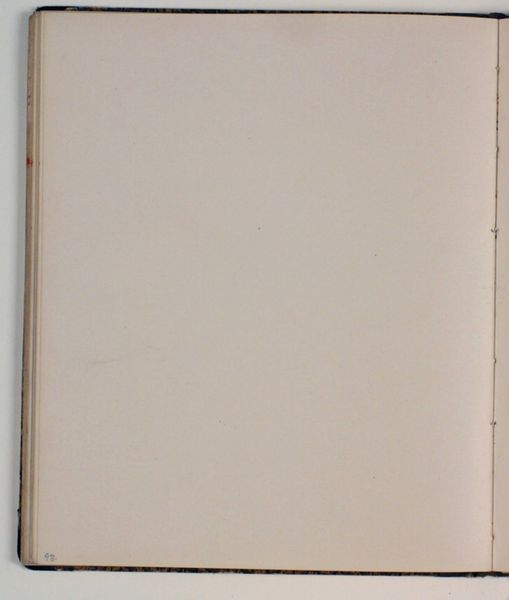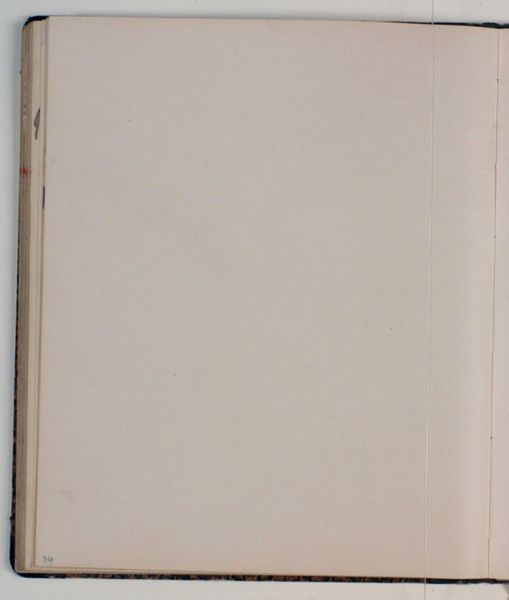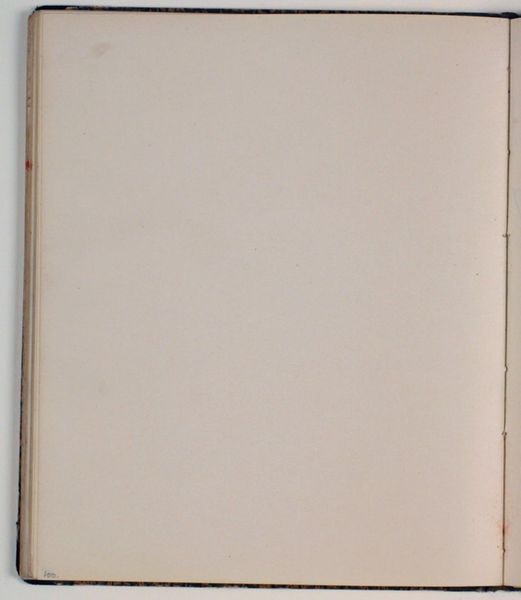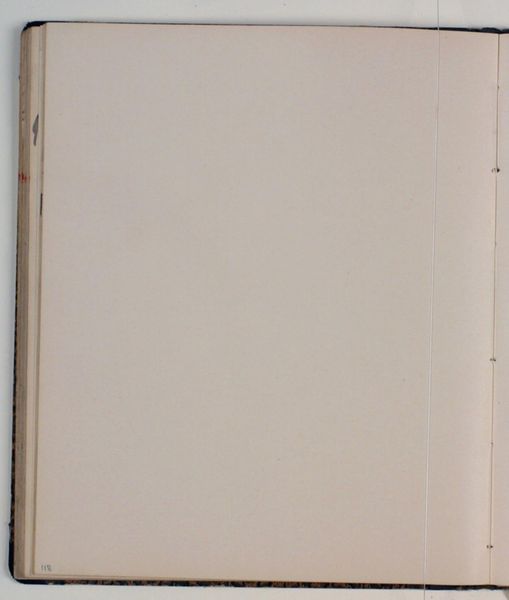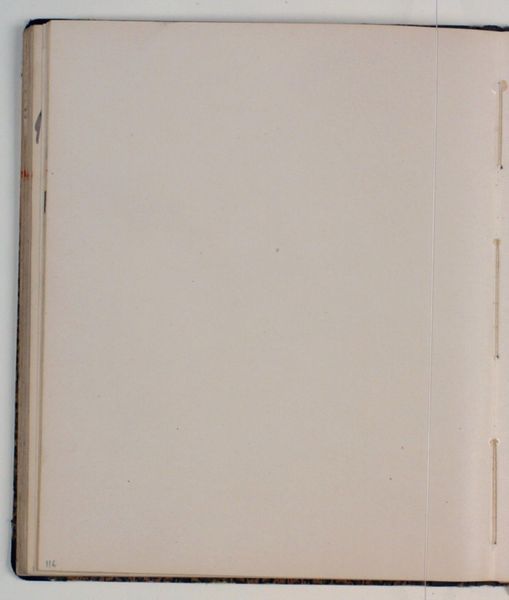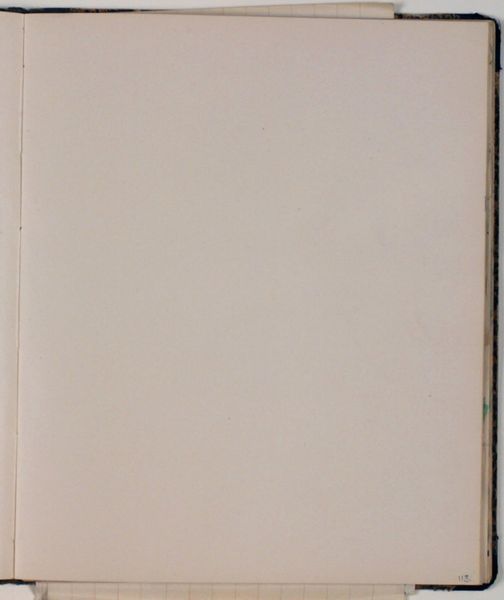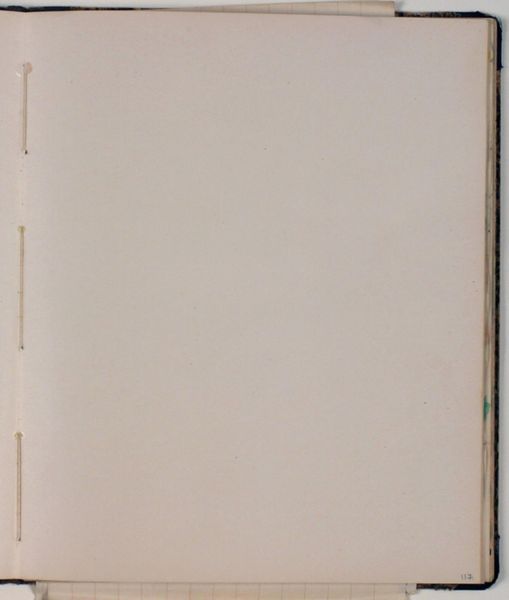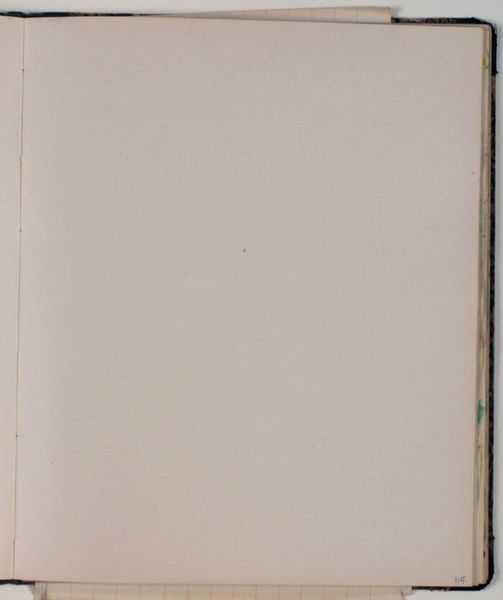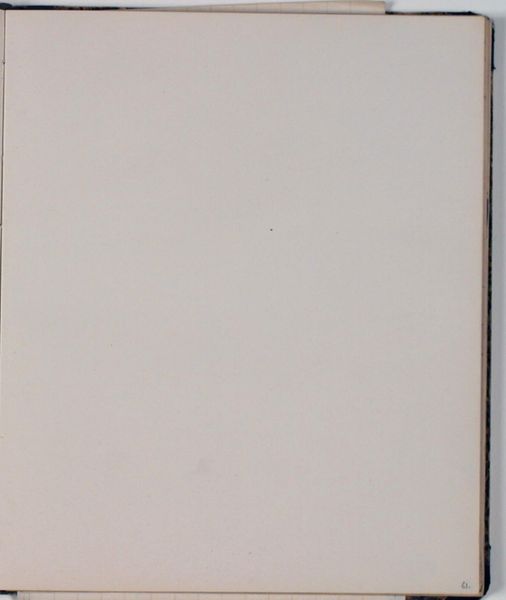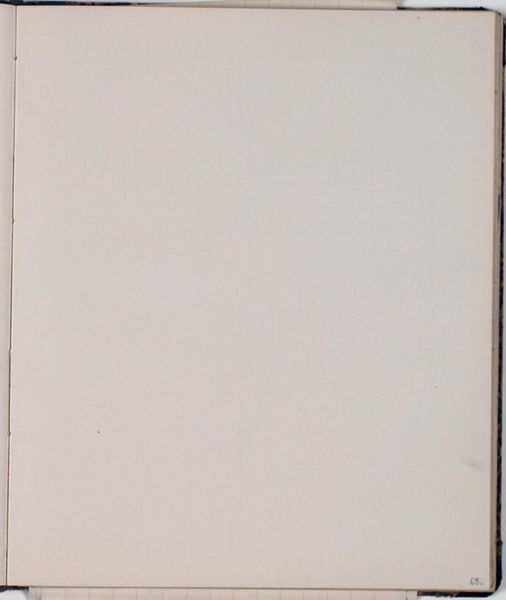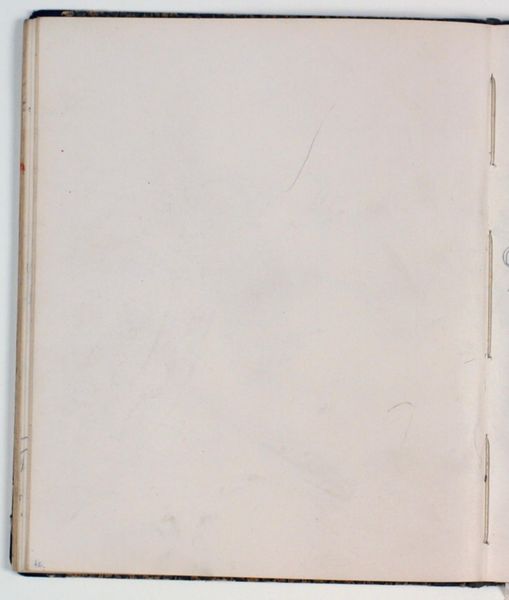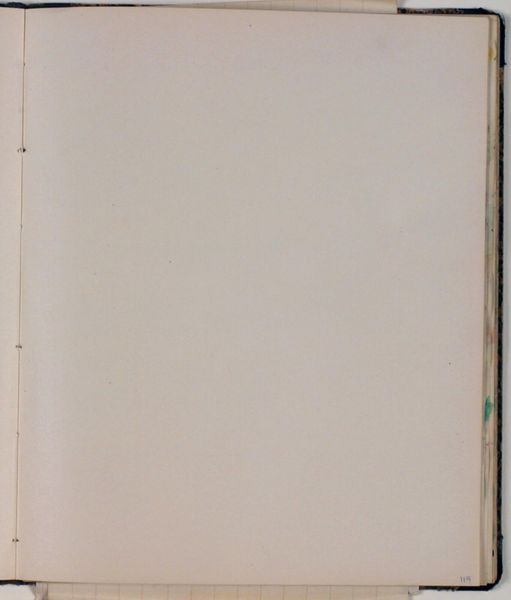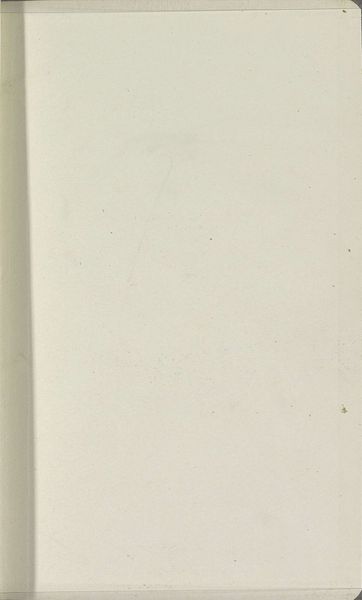
drawing, coloured-pencil, paper
#
drawing
#
coloured-pencil
#
paper
#
coloured pencil
Dimensions: 226 mm (height) x 185 mm (width) x 112 mm (depth) (monteringsmaal), 221 mm (height) x 184 mm (width) (bladmaal)
Editor: Right, so here we have "Blank" by Niels Larsen Stevns, made sometime between 1930 and 1936. It's a drawing, colored pencil on paper, and frankly, it looks like… well, a blank page. It feels kind of minimalist, but what am I missing? What do you see in it? Art Historian: Minimalism is interesting in this case. Consider the void as a potent symbol. Throughout art history, blankness has been a canvas for potential, a space for projection. Think of the white cube gallery space itself. How does this “blankness” differ, being contained within the bound pages of a sketchbook? Editor: So, it’s not *just* nothing? Are you suggesting that it means something because it’s in a sketchbook? Art Historian: Exactly! A sketchbook is a collection of ideas, possibilities, unfinished thoughts. A blank page in that context becomes an invitation, a challenge. It carries the weight of every idea that could be. What cultural memory is evoked for you by the blank page itself? Editor: Hmmm, writer's block? The fear of starting? All the pressure to fill it with something meaningful. Art Historian: Precisely! Stevns, by presenting us with this void, perhaps prompts us to consider the psychological and cultural weight we assign to creativity and artistic expression itself. He is highlighting how we, the viewers, imbue an image, even the absence of one, with symbolic value. Editor: I never would have thought that a blank page could have so much going on beneath the surface! I will never look at an empty canvas the same way. Thanks! Art Historian: My pleasure. And remember, sometimes the most profound statements are the ones that remain unsaid. There’s always more to unearth!
Comments
No comments
Be the first to comment and join the conversation on the ultimate creative platform.
